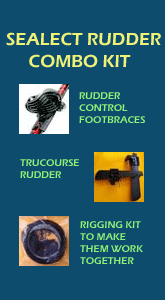Bow chocks, horn cleats, jam cleats, fairleads
- Materials: Hardwood scraps;
- Minimal Tools: Drill and bits, coping saw, wood rasp, vice;
- Helpful tools: Jig saw or band saw, Dremel, small power sander.
Whether you’re looking to save a nickel or add some salty details to your boat, making your own wooden deck hardware is easy and can be done quickly with basic tools and minimal skills. This is also a great project to use up small scraps of hardwood, or work in the house when it’s too cold out in the shop.
I started making my own horn cleats after studying them in The Marlinspike Sailor, by Hervey Garrett Smith. He offers some dimensions as a starting point, but there are a variety of sizes applicable to any boat.
Let’s start with the bow chocks. Once you make these, any other deck hardware pieces will be obvious. I took a rectangular scrap of 3/4” thick cherry and drilled two holes at an angle.
Your line diameter determines the hole size. I plan to use 3/8” line so I made the holes ½”. The angle isn’t critical; I used 45 degrees. Put the scrap in a vice with another backer scrap behind it to prevent tear out.
Next, on the top edge, cut an angled slot in the center for the line to pass through. This is cut perpendicular to the angle of the holes you just drilled. Again, size it for your line diameter.
Next, cut out the connecting walls between each of those drill holes to form a continuous horizontal slot.
A coping saw or keyhole saw works, or just maneuver your drill bit at a different angle. Cut the ends to length and trim the shoulders down at a pleasing angle. At this point, your bow chock should look like a worthless, unrecognizable piece of scrap. At least mine did.
From here on it’s all shaping and sanding. An aggressive cutting wood rasp makes quick work of the rough shaping. A round rat tail file will smooth out the sloping grooves where the line enters and exits. A Dremel-type rotary tool speeds things up. Round all sharp corners to prevent rope snags and improve the grip/longevity of your finish.
With bow chocks, note that the port and starboard sides are mirror images of each other, so you need to reverse the initial drill bit angles/line entry angles rather than duplicate them.
For the mounting holes, I recommend drilling them the same distance as a standard commercial version: if you need to replace them in the future, you won’t need to drill new holes in your boat.
Experiment. Don’t use your finest scraps for your first one. I am now on my third set of bow chocks because I’m still figuring out the size/scale I want. Each new version comes out better than the last. Same with horn cleats: experiment with the angles, height, etc. until you end up with just the right style.
For the horn cleats, one tip I recommend is buying commercial cleats to serve as your model. Use them to mark your mounting holes too; in fact, they can serve as a guide to keep your drill bit straight. They can be the cheapo nylon ones, and if you’re really money conscious, save the receipt and return them unused when you’re done. Better yet, keep some on board as spares.
Start by roughly drawing the shape of a commercial version. Cut the outline using a band saw, a jig saw or a coping saw, then start shaping with the rasp. You can keep them utilitarian or add some shapely details. I really like the results of adding one little aesthetic detail: drill a hole in the middle and carve/shape the wood to slope down like a dish. Again, the Dremel tool makes this much easier.
My Bosch oscillating tool with a triangular sanding pad worked really well for removing the saw marks and rasp shaping marks.
|















